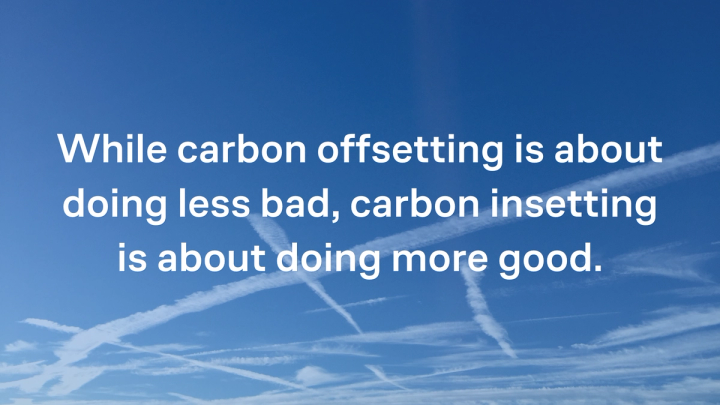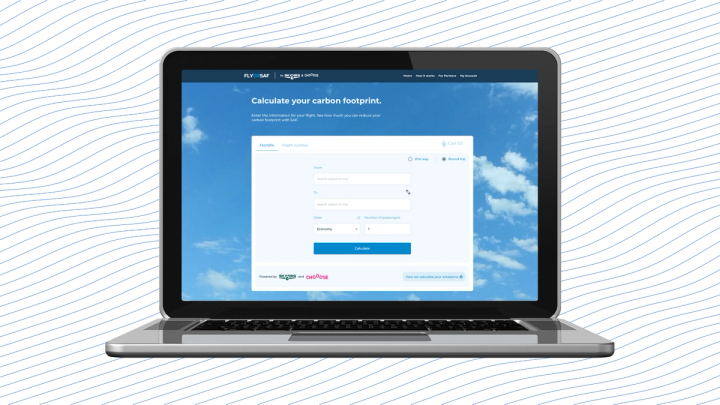Carbon insetting explained: decarbonising the aviation sector with SAF
August 29, 2022
Resources
What is the difference between carbon offsetting and carbon insetting? Carbon insetting is the practice of addressing carbon emissions inside your own supply chain or sector, rather than by supporting projects that are unrelated to your business practices.
As consumers worldwide are demanding more eco-friendly business practices from companies, many global brands have increasingly turned to carbon offsetting as a way to address their carbon footprint. While offsetting is a great way to support impactful climate projects worldwide while acknowledging your company’s carbon footprint, it is not the long-term solution for decarbonisation.
The best way to lower global carbon emissions is to firstly avoid and reduce them and then compensate for those that cannot be reduced, and carbon insetting applies that process to direct business practices.

What is carbon insetting?
As opposed to carbon offsetting (which allows companies to support carbon reduction, removal or avoidance projects around the world that are unrelated to their own business activities), carbon insetting gives companies the opportunity to support impactful projects within their own value chain. Companies invest or introduce more sustainable practices directly into their business practices.
Through carbon insetting, companies are required to look more closely at their own sphere of influence and find ways to conduct business in a more sustainable way, instead of continuing on the same path and offsetting.
Think of it this way: while carbon offsetting is about doing less bad, carbon insetting is about doing more good.
Insetting requires companies to deeply understand and take responsibility for their own business practices.
Carbon insetting with SAF
One example of carbon insetting is the use of sustainable aviation fuel (SAF) in the aviation industry. Experts repeatedly stress that SAF is the best solution we have to reduce the carbon footprint of flying in the short term: the carbon emissions of SAF are up to 80% lower than from burning fossil-based jet fuel.
So why isn’t it more widely available? Costs and enforcement on a policy level are the main stumbling blocks. SAF is currently produced in small volumes, and it costs significantly more than fossil kerosene, enough to make it difficult for SAF to compete in the jet fuel market.
Some of the world’s most dynamic airlines and airports are directly financing and lobbying for SAF. For example, Heathrow Airport is now giving all its passengers the opportunity to offset their flight’s carbon emissions by purchasing SAF. But without the right political incentives or appetite, this makes it hard for airlines to sign up for significant long-term supply contracts and it puts off investors.
However, carbon insetting with SAF (using SAF directly in the supply chain) allows an airline to take responsibility for their carbon emissions and support the production and use of this more sustainable alternative jet fuel.

Taking the insetting initiative
CHOOOSE helps companies and individuals manage and minimise their carbon footprint, through carbon offsetting via verified high-standard climate projects and insetting via sustainable aviation fuel (SAF).
As a global first, CHOOOSE supports SAF supply and transactions via both mass balance and book and claim models, and can onboard an airline’s own SAF supply to start carbon insetting. Some of CHOOOSE’s partners in the initiative of encouraging greater adaption of SAF include the World Economic Forum, SAP Concur, SkyNRG, The Climate Gig, Finnair, and Heathrow Airport.
Are you ready to start insetting with SAF? Reach out to us today.
POLICIES
COMPANY
PRODUCTS